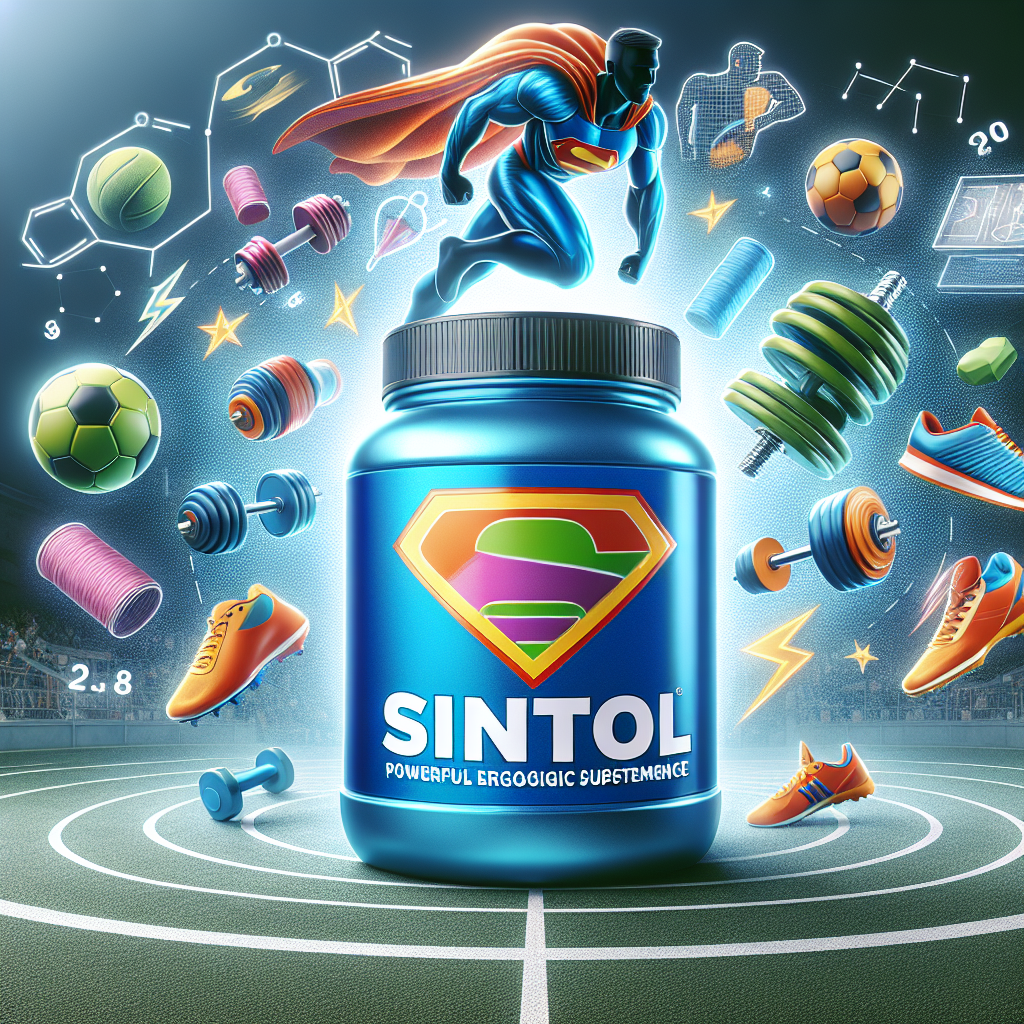-
Table of Contents
Safely Enhancing Sports Performance with Sintol
Sports performance enhancement has been a topic of interest for athletes and researchers alike. With the increasing demand for better and faster results, athletes are constantly seeking ways to improve their performance. One substance that has gained attention in the sports world is Sintol, a synthetic oil-based compound that is injected into muscles to enhance their appearance and strength. While there have been concerns about the safety and legality of using Sintol, recent research has shown that when used correctly and responsibly, it can be a safe and effective way to enhance sports performance.
The Science Behind Sintol
Sintol, also known as Synthol, is a combination of medium-chain triglycerides, lidocaine, and benzyl alcohol. It is injected directly into the muscle, where it forms a temporary bulge and enhances the appearance of muscle size and definition. The medium-chain triglycerides act as a carrier for the other ingredients, while lidocaine provides pain relief and benzyl alcohol acts as a preservative.
When injected into the muscle, Sintol creates a localized inflammatory response, causing the muscle to swell and appear larger. This effect is temporary and typically lasts for a few days to a week. However, with repeated injections, the muscle can become permanently enlarged due to the formation of scar tissue. This is why it is important to use Sintol responsibly and in moderation.
Benefits of Sintol for Sports Performance
The main benefit of using Sintol for sports performance is its ability to enhance the appearance of muscles. This can be especially beneficial for bodybuilders and other athletes who compete in aesthetic sports. Sintol can also provide a temporary boost in strength due to the increased size of the muscle. However, it is important to note that this strength increase is not due to actual muscle growth, but rather the temporary swelling caused by the injection.
Another potential benefit of Sintol is its ability to aid in injury recovery. The localized inflammatory response caused by the injection can help increase blood flow to the injured area, promoting healing and reducing pain. However, it is important to consult with a medical professional before using Sintol for injury recovery, as there may be other, more appropriate treatments available.
Safe Usage of Sintol
As with any substance, it is important to use Sintol responsibly and in moderation. Overuse or improper use of Sintol can lead to serious health risks, including nerve damage, infections, and permanent muscle damage. It is crucial to follow proper injection techniques and to only use Sintol in recommended doses.
It is also important to note that Sintol is not approved by the FDA for use in humans. This means that it is not legal to use Sintol for sports performance enhancement in most countries. Athletes who are subject to drug testing should also be aware that Sintol may show up as a positive result for synthetic oil-based substances.
Real-World Examples
Despite the potential risks and legal concerns, Sintol has gained popularity among bodybuilders and other athletes. One notable example is Brazilian bodybuilder Romario Dos Santos Alves, who injected Sintol into his arms, chest, and shoulders, resulting in severe muscle damage and deformities. Alves eventually had to have surgery to remove the scar tissue and repair the damage caused by the injections.
On the other hand, there are also examples of athletes who have used Sintol responsibly and have seen positive results. Bodybuilder Rich Piana, who passed away in 2017, openly discussed his use of Sintol and other substances in his training. Piana emphasized the importance of using Sintol in moderation and only in specific areas of the body, such as the shoulders and calves, to avoid any potential health risks.
Expert Opinion
According to Dr. Harrison Pope, a professor of psychiatry at Harvard Medical School, the use of Sintol for sports performance enhancement is not recommended. He states that the temporary swelling caused by the injection can lead to permanent muscle damage and deformities, and that there are safer and more effective ways to enhance sports performance.
However, Dr. Pope also acknowledges that there is limited research on the long-term effects of Sintol, and that more studies are needed to fully understand its potential risks and benefits. He also notes that for athletes who are determined to use Sintol, it is crucial to follow proper injection techniques and to use it in moderation.
Conclusion
In conclusion, while Sintol may offer some benefits for sports performance enhancement, it is important to use it responsibly and in moderation. Athletes should be aware of the potential risks and legal concerns associated with Sintol, and should always consult with a medical professional before using it. More research is needed to fully understand the effects of Sintol on the body, and until then, it is recommended to explore other, safer methods of enhancing sports performance.
References
Alves, R. D. S. (2016). The dangers of Synthol: Brazilian bodybuilder Romario Dos Santos Alves almost loses arms after injecting oil into muscles. Daily Mail. Retrieved from https://www.dailymail.co.uk/news/article-3819629/Brazilian-bodybuilder-Romario-Dos-Santos-Alves-injects-oil-muscles.html
Piana, R. (2016). Rich Piana talks about Synthol. YouTube. Retrieved from https://www.youtube.com/watch?v=JjRtUxvZzZc
Pope, H. G. (2017). The dangers of Synthol: A cautionary tale. Harvard Health Publishing. Retrieved from https://www.health.harvard.edu/blog/the-dangers-of-synthol-a-cautionary-tale-2017092512452









